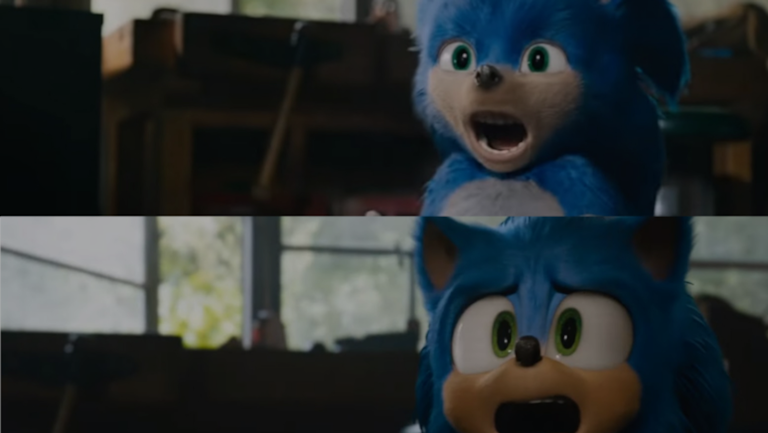Shopping Bag (0)
Your shopping bag is empty


Amplify’s ECD Alex Wilson dives into artistic ownership and intention through creative evolution and retconning...
“Art is never finished, only abandoned.” Leonardo Da Vinci
Sure, quoting Da Vinci is a lofty opener, but hear me out. There’s a school of thought in the art world where once something is released into the world it is no longer the possession of the artist, it belongs to the audience to have personal interpretation and ownership over.
There is another school that suggests that creativity never stops.
Most recently it was revealed that Stranger Things creators The Duffer Brothers had been re-editing and retconning older seasons of the show to fix inconsistencies and improve some of the VFX where the technology has improved in the years since.
They turned the name George Lucas into a verb in service to the fact Lucas himself was famous for making multiple changes to his original Star Wars Trilogy. Citing that the changes were always his intention, but the limitations in budget, time and available technology at the time meant he could not fully realise his vision until decades later.
Ridley Scott’s 1982 sci-fi classic Blade Runner has had a number of re-edits over the years, including a 1992 ‘Director’s Cut’ which ironically wasn’t actually supervised by the director, and eventually a ‘Final Cut’ in 2007 which included scenes that dialled up some thematic ambiguity around the main character that was lost with studio interference in the original theatrical release.
Those examples lean more into fixing mistakes or realising pre-existing visions that at the time weren't possible, but what about creators who see their art as a constant work in progress?
Kanye West treated his 2016 album The Life of Pablo as a ‘living art piece,’ continuing to refine and evolve it months after its release on platforms like Apple Music and Tidal. Tracks had vocals altered, lyrics updated and even adding new talent.
But it’s not always artistic endeavour that leads to work being updated, there have been several cases recently, most notably Lizzo and Beyonce, where the artists have changed lyrics in their tracks that were deemed to be insensitive or harmful. Social media has opened up a much more direct feedback loop from audience to artist that can have genuine impact on a release or piece of work from a creator.
Zach Snyder’s Justice League is a fascinating case of an unrealised vision meeting social media fan-power to create a cultural movement. Due to a personal tragedy, Snyder had to step away from production of the film before it was finished. The studio put director Joss Whedon at the helm to complete the picture with disastrous results. If you’ve not heard about Henry Cavill’s moustache-gate then you really should take a look.
Three years after the theatrical release, in the midst of the pandemic, due to an enormous ground swell from his fanbase and the ‘Release the Snyder Cut’ movement, Snyder was able to unleash his four hour epic vision on HBO Max, on a platform and in a style he would not have been able to originally. The world grinding to a halt allowed him to continue to hone the version of the film he wanted to share with the world, which is a rare gift for a creative.
Social media has also meant that real-time audience feedback can influence creative decisions and changes at a fundamental level. The first Sonic the Hedgehog trailer was released to huge backlash from fans due to the attempted ‘realistic’ design of the titular character. A blue hedgehog with human teeth is a unique kind of nightmare fuel, but the reaction was so severe that the creators went back to the drawing board and redesigned the character to be more faithful to his gaming roots.
That level of public RND may not have been intentional, but the likes of ‘inventor’ Elon Musk and his cybertruck with breakable ‘unbreakable’ windows, exploding Space X rockets or Tesla’s catching fire, is a very open and unapologetic public ideator. As the saying goes in our industry, a project is rarely finished, you just run out of time. I’m sure his research and development teams can relate.
And finally, what of art that is created to evolve itself without the artist’s intervention? Olafur Eliasson transported 30 icebergs from Greenland to London to highlight the impact of climate change. These icebergs slowly melted away, an ever changing piece of art that communicates a message by their natural erasure. Conversely, in 2007 Roman Ondák created Measuring the Universe which handed the keys over to the audience, asking them to record their height, name and date in a white room, generating a closer relationship with art and spectator which grew over time.
So as the original polymath Da Vinci outlined up top; does art and creativity ever stop, or do we just run out of time, money or energy? According to Salvador Domingo Felipe Jacinto Dalí i Domènech, or “Dalí” to his mates, perfection is unattainable; “Have no fear of perfection, you will never reach it.”
Will Kanye ever be truly happy with a track? Will Ridley Scott ever get to watch his true vision of Blade Runner? Will Elon f*ck off to Mars? I hope the answer to all of those is yes, but getting to that point means that creativity can never stop.
Alex Wilson is executive creative director at Amplify
To read the original article visit Little Black Book.